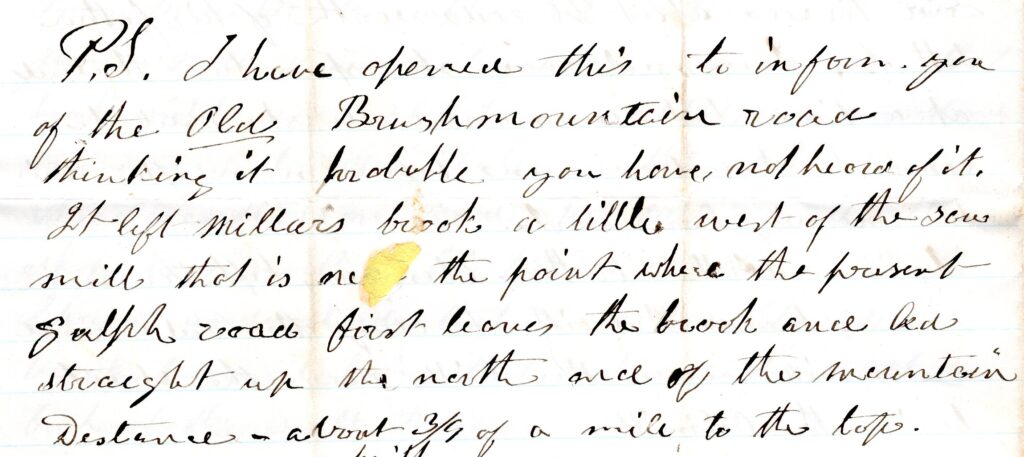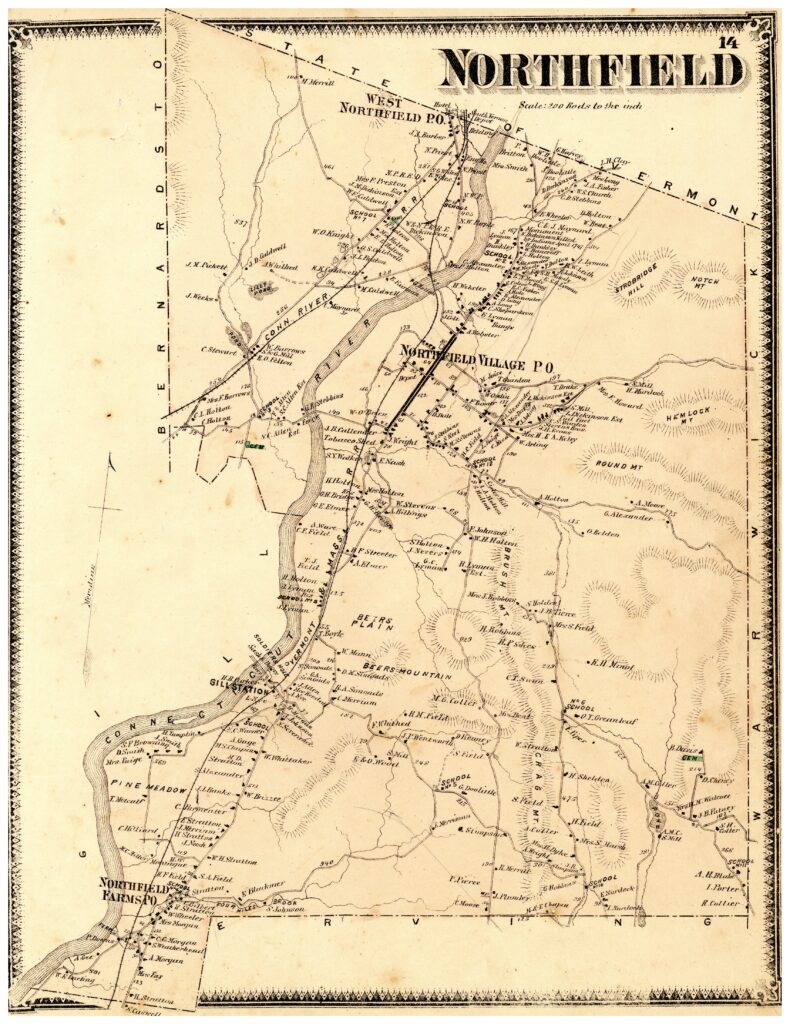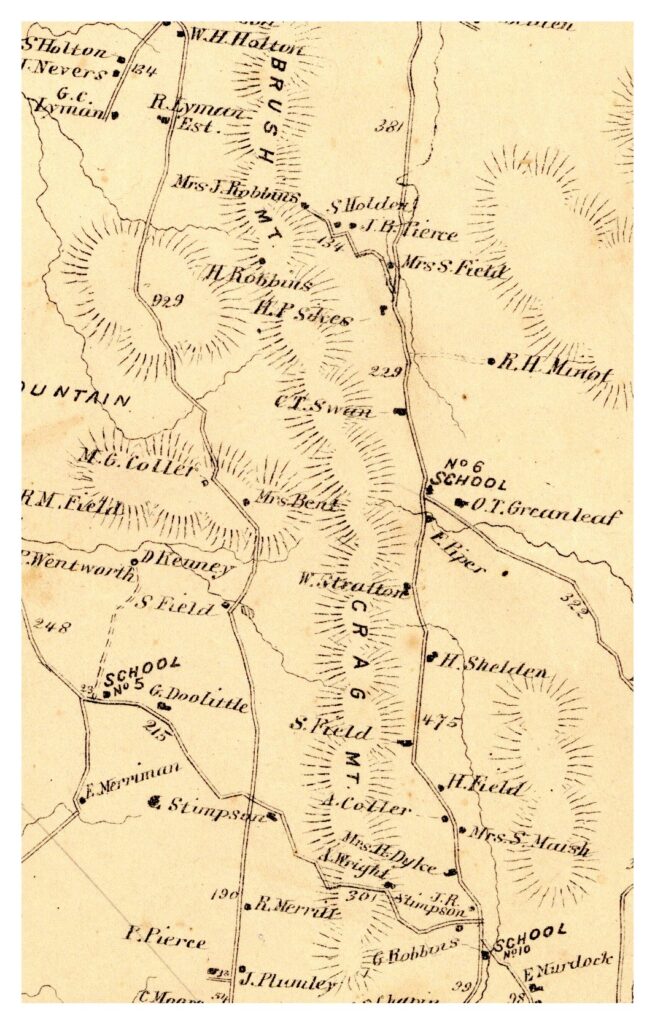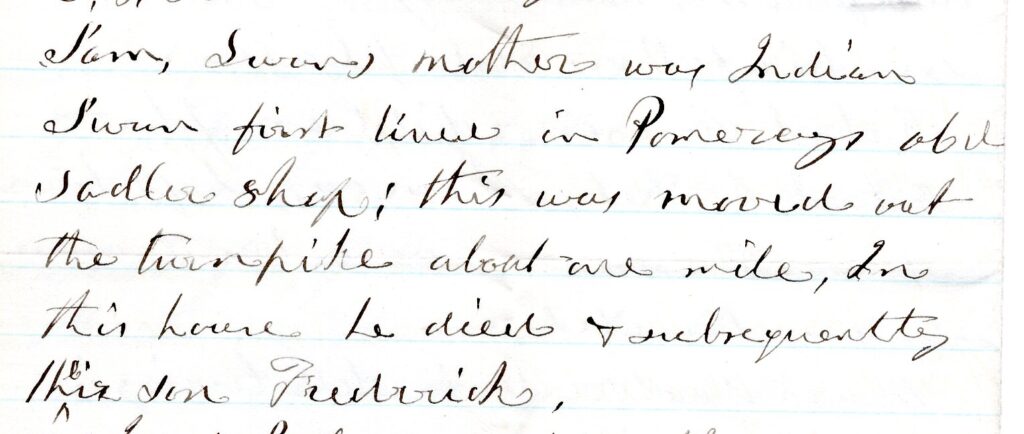by Katie Lincoln

Northfield, Massachusetts is a town located north of Deerfield, in the mountains just below the Vermont border. The town, which was only the second in the county to be incorporated by the year 1723, is well known in the area for its small community and agricultural production. As part of the town’s 250th anniversary celebration in 2023, the Northfield Historical Commission became interested in uplifting previously unknown histories associated with the region. One history, which I have been researching for my masters thesis, pertains to the story of Northfield’s nineteenth-century Methodist Crag Mountain Community and its most prominent resident, a free Black carpenter named Calvin Swan. Swan became a significant figure in Crag Mountain’s history in 2003 after late the historian, Betty Congdon, published a biographical analysis of Swan’s successes as a landowner, carpenter, farmer, Methodist, and only Black person to live in his community. Beyond this, Swan also served leadership positions within his church, school board, local abolitionist group, and temperance society.
By employing spatial and documentary analysis in the study of Swan and his neighbors, I hope to address the unique nature of his racial experiences within Northfield, while also creating a better understanding of how the community as a whole navigated socioeconomic mobility during the nineteenth century. The utilization of landscape archaeology (LiDAR and pedestrian mapping) will specifically aid in the creation of a multi-decade timeline of the community, showcasing how and why residents modified their labor and land ownership practices to sustain their wealth over time. This work will not only contribute to current research regarding rural economic transitions which occurred in nineteenth-century New England, but will also position a person of color within this landscape, explaining why and how his socio-economic experiences were different from that of his neighbors.


While embarking on this research, I was afforded the opportunity to conduct research at the Memorial Libraries through Historic Deerfield’s research fellowship program. While there, I focused primarily on account books, but I also came across letters written in the late nineteenth century between Northfield locals Phineas Field and J.H. Temple. Temple, a historian, began writing to town residents in the early 1870s to inquire about any significant events and family histories. He included this information in his and co-author George Sheldon’s 1875 publication, A History of the Town of Northfield Massachusetts for 150 years.
Given that the actual book does not discuss Crag Mountain or its Methodist community, I did not expect to find anything relevant to my research. However, I decided to look at the letters and immediately found two which mention the Crag Mountain community. These letters, written by Field in the years 1873 and 1874, include detailed descriptions of the Crag Mountain landscape and multiple longtime residents, including Calvin Swan. These letters serve as the only known correspondence discussing the nineteenth-century occupation of Crag Mountain and has been a great help in my spatial reconstruction of the community’s property lines and historic features. Specifically, the road which Field described as “the Old Brush Mountain Road” no longer exists and is mentioned in several land deeds from the nineteenth century. Field’s instructive descriptions helped me to not only identify the likely path of the road, but it also made property line reconstructions in this area possible.

The last pages of Field’s 1873 letter speaks more directly about the family histories of Crag residents. On the second to last page, Field mentions that before Swan moved to the mountain, there was one other person of color who lived on the mountain. A man named Samuel Jons, who Field regards as having “full Indian blood”, supposedly lived on Crag Mountain in a house later occupied by a member of the Coller family. Furthermore, on the last page, Field gives a family history of Swan, noting that his stepfather was of local Indigenous descent and that his family grew up in William Pomeroy’s old saddle shop relatively close to Crag Mountain.
While the specific details of the 1873 letter do not fully inform my spatial reconstruction of the community, they definitely reorient my interpretation regarding Swan’s experiences as a person of color on Crag Mountain. Additionally, seeing this information presented so prominently in the letters, but not at all in the published town history, reiterates the importance of conducting research on lesser-known communities. The historical record has a way of erasing certain peoples from the collective memory, leaving historians to try to pick them out whenever possible. I am thankful to Historic Deerfield and the Memorial Libraries for affording me the extra time and resources to fully recover Calvin Swan’s story and use it to interrogate the socio-economic factors which affected his rural, farming community over the course of the nineteenth century.

Katie Lincoln is a Master’s student in Historical Archaeology at UMass Boston. She spent four weeks here working on her thesis, “Life on Old Crag: A Spatial Examination of Community and Economic Relations in Rural 19th Century Massachusetts.”
Further Reading:
Elizabeth Congdon, “Calvin T. Swan, African American Carpenter in Rural Massachusetts,” The Dublin Seminar for New England Folklife Proceedings on Slavery/Antislavery in New England, 2003: 115-127.
J.H. Temple, G. Sheldon, & M.T. Stratton, A History of the Town of Northfield, Massachusetts, for 150 years (Albany, N.Y.: J. Munsell, 1875)